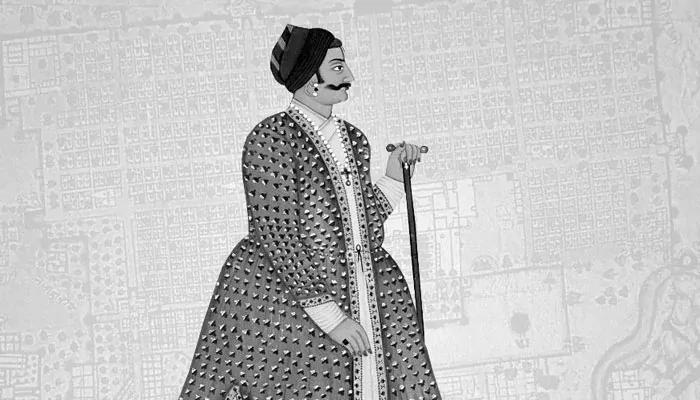
Move over Westeros — these Indian royals rewrote the rules of power!
Beyond glittering palaces and grand processions, India’s royal past is also about tangled bloodlines, political chess games, and dynasties where betrayal was often part of the throne room decor. If you thought the famous HBO series Game of Thrones had the most complex family drama, India’s royal family trees offer even more twists, and every bit of it is real.
Let’s dive into some of the most dramatic Indian royal family trees, complete with powerful monarchs, fierce rivalries, and legacies that continue to echo through history.
The Mughal family tree reads like a plot of blockbuster drama. Starting with Babur, the founder of the empire, who defeated the Lodi dynasty at the First Battle of Panipat in 1526, the dynasty had a unique combination of Persian sophistication and Central Asian ambition. His son Humayun lost his kingdom, only to reclaim it later with Persian help. Akbar the Great, Humayun’s son, not only built the empire but expanded it through brilliant diplomacy and military strategy. His grandson Jahangir had a turbulent rule, which passed on to Shah Jahan, the emperor known for creating Taj Mahal. Then came Aurangzeb, who imprisoned Shah Jahan and ruled with an iron fist, expanding the empire to its greatest extent but at the cost of fracturing it from within. The Mughal throne was completely soaked in blood and betrayal, much like the Iron Throne itself.
The Marathas didn’t inherit their kingdom — they carved it with great determination, grit and guerrilla warfare. Chhatrapati Shivaji Maharaj, the founder, built a Maratha empire that challenged the mighty Mughals. However, after his death, the empire saw internal power shifts.
His grandson Shahu Maharaj appointed Peshwa Baji Rao I as the prime minister — a man so skilled in warfare and strategy that he won 40 battles. But power struggles within the extended Bhonsle family and the ambitious Peshwas created friction that eventually weakened the unity of the empire.
Just like the Lannisters and Starks, loyalty and ambition constantly clashed in the Maratha court.
In Rajasthan, two of the most famous dynasties — the Kachwahas of Jaipur and the Rathores of Jodhpur — ruled in parallel grandeur, however, their family trees were anything but harmonious. Maharaja Sawai Jai Singh II, the founder of Jaipur, was not just a ruler but also a scientist and astronomer. Meanwhile, Maharaja Ajit Singh of Jodhpur ruled with bold defiance, often clashing with Mughal authority.
Inside the family, cousins, uncles, and heirs frequently turned rivals as succession disputes and external alliances (especially with the British rule) added fuel to internal Rajput rivalries.
Mysore's royal history is marked by sharp turns. Originally ruled by the Wodeyars, the throne was usurped by Hyder Ali, whose son Tipu Sultan, famously known as the "Tiger of Mysore," became a legendary resistance figure against British colonisation.
After Tipu’s fall in 1799, the British rulers reinstated the Wodeyars, placing Mummadi Krishnaraja Wodeyar back on the throne. This back-and-forth made their family tree a dramatic loop of restoration and revenge.
Mysore's royal history talks more about rebirth and rebellion.

The Scindia dynasty began as Maratha commanders and rose to become rulers of Gwalior. Mahadji Scindia, a brilliant tactician, helped restore the Maratha power after the Third Battle of Panipat. Followed by this, his successors grew increasingly close to the British. In modern India, the family reinvented itself. Madhavrao Scindia became a popular politician, followed by his son Jyotiraditya Scindia, who remains a key figure in Indian politics. The throne may have been replaced by Parliament but the family drama goes on.
The Chola dynasty, one of the longest-ruling and most powerful dynasties in Indian history, was built on naval supremacy, temple architecture, and strategic governance. At the heart of their royal family tree were iconic rulers like Rajaraja Chola I, who expanded the empire across Southern part of India and Sri Lanka, and his son Rajendra Chola I, who took the conquest further, launching naval expeditions to Southeast Asia, establishing influence across the Bay of Bengal. Unlike other dynasties, the Chola kings were both warriors and patrons of the arts, leaving behind numerous architectural marvels like the Brihadeeswara Temple. Their family legacy depicts how a regional kingdom can build a trans-oceanic empire.
Unlike most Indian royal families, Travancore followed a matrilineal system. The succession didn’t pass from father to son, but from maternal uncles to nephews, making women central to royal inheritance.
Maharani Gowri Lakshmi Bayi and her sister Gowri Parvati Bayi played pivotal roles in administration and reform in the 19th century. In a world of kings, these formidable queens rewrote the typical patriarchal royal script, which was both radical and ahead of its time.
Whether it was Mughal emperors feuding with their sons, Maratha cousins fighting for control, or Rajput thrones claimed by backdoor politics, Indian royal family trees were packed with betrayal, brilliance, and legacy.
These were not fantasy tales, rather they were real stories that shaped the fate of millions, with every strategy continuing to inspire politicians.